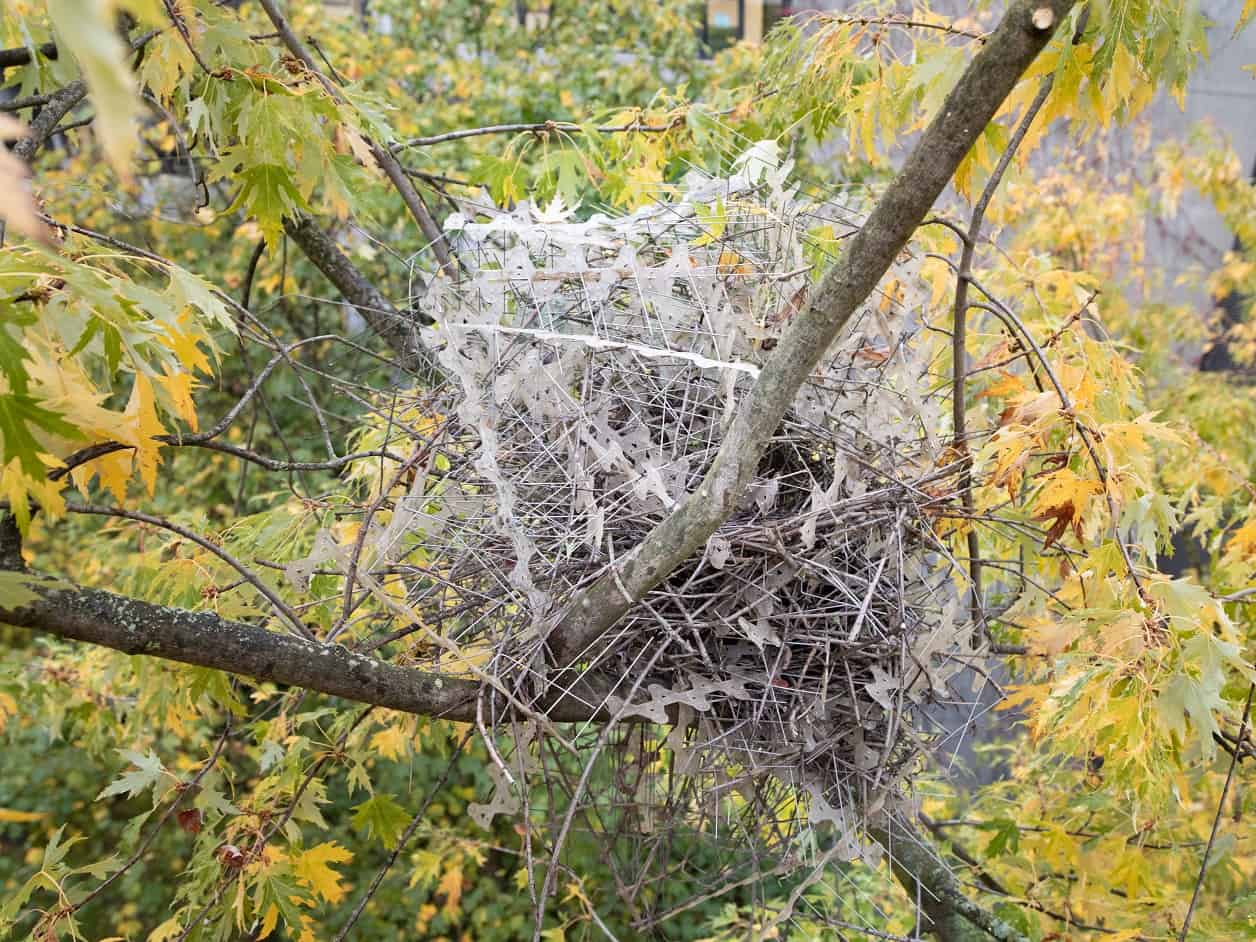Look around your city and you’ll be bound to spot them in many buildings. Anti-bird spikes are placed to scare away birds and prevent them from building nests in urban areas. But it seems some birds are not intimidated at all.
Nests recovered by researchers from trees in cities in Europe were found to be built from large numbers of strips of the anti-bird spikes.
It all started with the discovery of a large nest in Antwerp, Belgium, in the courtyard of a hospital. Up in the tree, magpies had built a nest from a staggering 1,500 pieces of metal spikes. Auke-Florian Hiemstra, the study lead author, described it as an “impregnable fortress” as birds use the pins the same way humans do -– to keep other birds away.
The nest’s discovery led Hiemstra and his team to look on the internet for more examples. Overall, this is the first well-documented study that argues birds are using sharp spikes outwards to maximize their protection.
“It’s like a joke, really. Even for me as a nest researcher, these are the craziest bird nests I’ve ever seen,” Hiemstra added.

Adapting to city life
Magpies are known to build a roof on their nests to protect their eggs and young. In nature, they actively seek out thorny plants, utilizing spiky branches to deter potential egg robbers. However, in urban environments, magpies discovered anti-bird spikes as another alternative to keep other nosy birds at bay.
Bird nests made from anti-bird spikes! 🤯 Even for me as a nest researcher, these are the craziest bird nests I’ve ever seen. Today my paper came out on this rebellious behaviour. And it’s like telling a joke…
A thread. 🧵 pic.twitter.com/X8dTZICS34
— Auke-Florian (@AukeFlorian) July 11, 2023
The study describes numerous instances of magpie nests incorporating anti-bird spikes. Remarkably, this phenomenon has been observed in the Netherlands, Belgium, and Scotland. Magpies were also found to use other sharp materials such as barbed wire and knitting needles to construct the roofs of their nests.
“Just when you think you’ve seen it all after half a century of studying natural history, these inventive crows and magpies really surprise me again,” Kees Moeliker, director of the Natural History Museum Rotterdam and co-author of the study, said in a press release.


In the past, birds were found to add urban materials on multiple occasions. Back in 1933, a museum in South Africa reported a crow’s nest built from copper, iron and barbed wire. More recently, the viral videos of the “Parkdale Pigeon” and of other rebellious birds gained fame on social media for not being scared by anti-bird spikes.
Hiemstra is now doing a Ph.D. at Leiden University on the use of artificial materials in animal structures. He has published previous papers on how birds use plastic plants to build their nest, as he explains in this interview with ZME Science. He has also found condoms, sunglasses, windshield wipers, and even cocaine wraps used as nesting materials.
The magpie’s nest spotted in Antwerp can now be seen as a new highlight at the Naturalis Biodiversity Center in Leiden, Netherlands.
“If even bird-repellent sharp spikes are used as nesting material, apparently anything can end up in a bird’s nest these days. It doesn’t get any crazier than this, does it?” Hiemstra added in a statement.
The study was published in the Journal of the Natural History Museum in Rotterdam.
Thanks for your feedback!





















Discussion about this post